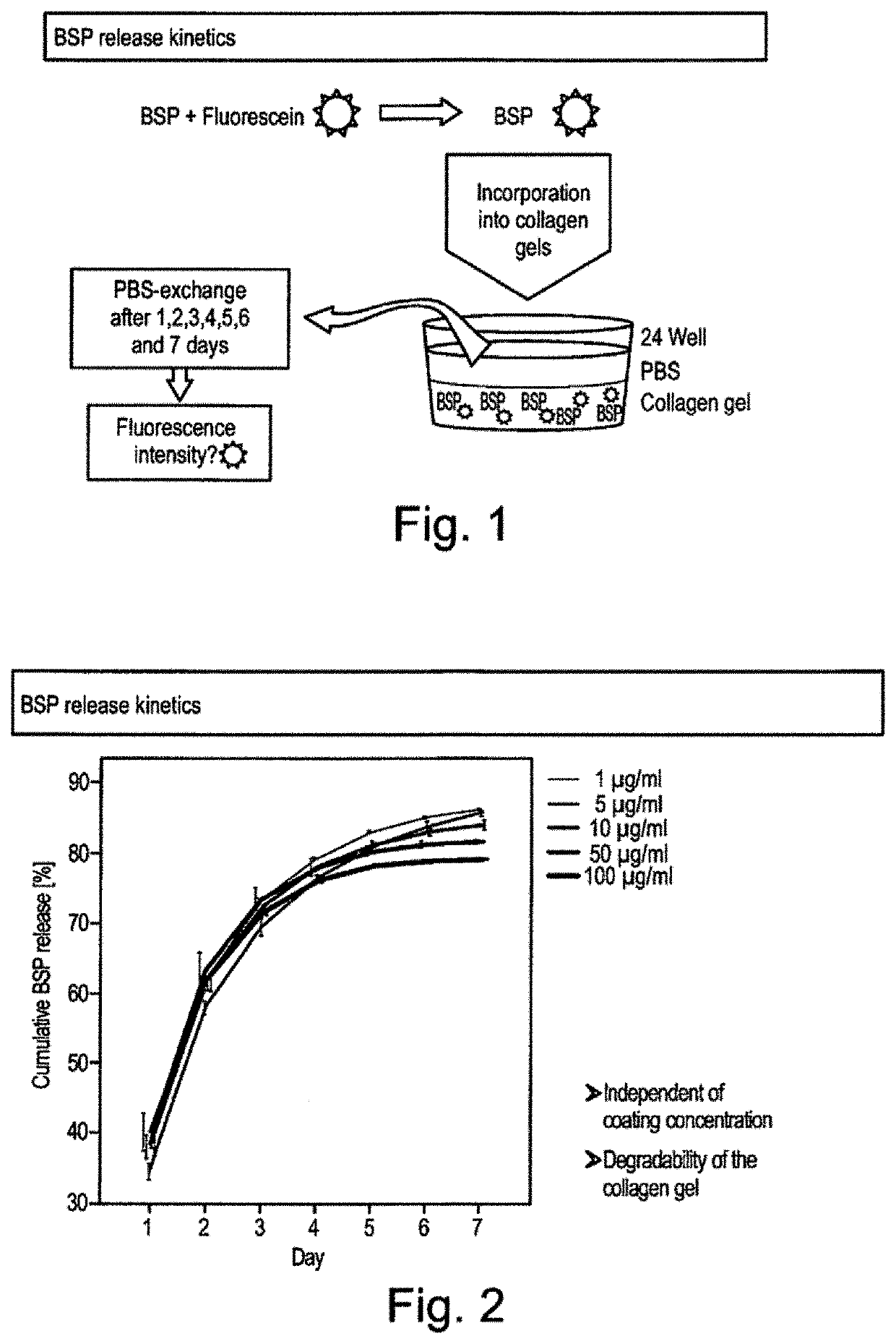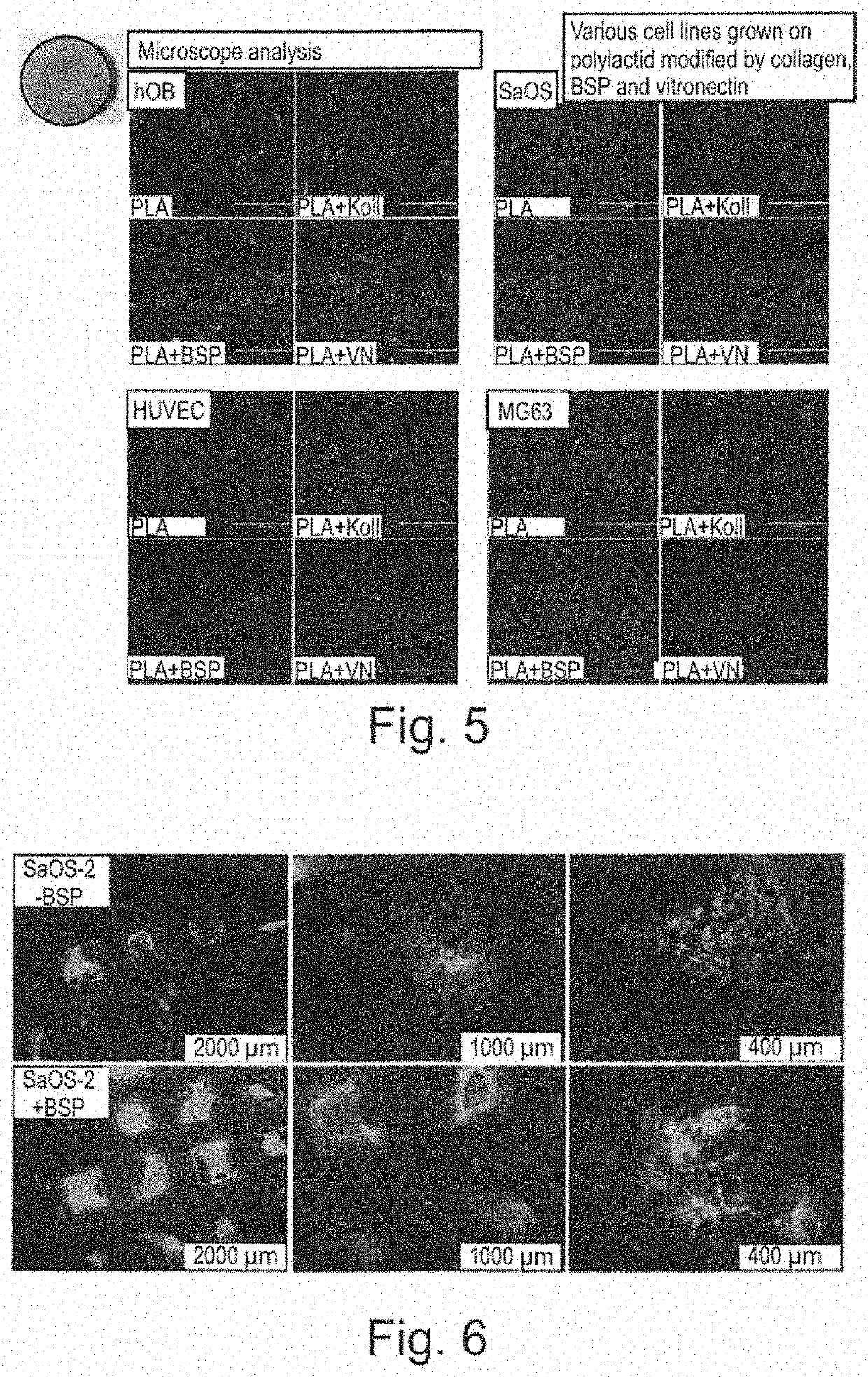Bone sialoprotein functionalized materials for directed bone regeneration
a functionalized material and bone technology, applied in the field of 3dprinted composites, can solve the problems of uncontrolled and undirectional growth, dysfunctional bone tissues, and prior art notwithstanding, and achieve the effects of enhancing cell viability and sprouting formation, enhancing osteoblast gene expression, and safe, non-tumorigenic environmen
- Summary
- Abstract
- Description
- Claims
- Application Information
AI Technical Summary
Benefits of technology
Problems solved by technology
Method used
Image
Examples
example 1
BSP Coated Printed Prosthesis in Rat Femur
[0043]The animal experiment was approved by the competent Rhineland-Palatinate State Investigation Office (LUA). The steps of this animal experiment can be taken from FIGS. 9 and 10. In brief, a piece of the rat femur was cut out as indicated and repaired by a 3-D printed polylactide prosthesis which was put in place as indicated using an 8-hole fixing plate. FIG. 9 shows the principle and FIG. 10 the surgery steps. The rat femur was X-rayed immediately after surgery and after 2, 4, 6 and 8 weeks as shown in FIGS. 11 and 12. The fixing plate and the prosthesis are not sufficiently electron dense to be visible. The femurs were further histologically examined (results not shown).
[0044]The enormous advantage compared to the state-of-the-art (FIG. 11) employing bone morphogenic proteins (BMPs) or collagen is that BSP does not induce overgrowing of bone tissue and that the described combination of a printed polylactide body furthers directed or c...
example 2
BSP Collagen Prosthesistreating in a Calvarial Bone Defect
[0047]Referring to FIG. 13, the prosthesis was used to treat a calvarial bone defect. The animal experiment was approved by the competent Rhineland-Palatinate State investigation Office (LUA). The rats were operated under general anesthesia and placed in each case two boreholes with a diameter of 2.5 mm—a bone defect of critical size. Then, BSP collagen gels were placed into the borehole to cover it up. After an observation periods of 3 and 8 weeks, the animals were anesthetized and decapitated.
[0048]The skulls were fixed in formalin for one week and prepared for fJeT imaging. The animal experiment included following groups:
[0049]a) Negative control: i) untreated borehole defect, and ii) treated borehole defect with collagen only.
[0050]b) Positive control: treated borehole defect with BMP-7 (2 μg).
[0051]c) Experiment: i) BSP treated collagen gels with 0.5 μg, and ii) BSP treated collagen gels with 5 μg.
[0052]The BSP treated a...
PUM
| Property | Measurement | Unit |
|---|---|---|
| Density | aaaaa | aaaaa |
| Density | aaaaa | aaaaa |
| Density | aaaaa | aaaaa |
Abstract
Description
Claims
Application Information
 Login to View More
Login to View More - R&D
- Intellectual Property
- Life Sciences
- Materials
- Tech Scout
- Unparalleled Data Quality
- Higher Quality Content
- 60% Fewer Hallucinations
Browse by: Latest US Patents, China's latest patents, Technical Efficacy Thesaurus, Application Domain, Technology Topic, Popular Technical Reports.
© 2025 PatSnap. All rights reserved.Legal|Privacy policy|Modern Slavery Act Transparency Statement|Sitemap|About US| Contact US: help@patsnap.com



